Live on the homepage now!
Reader Supported News
A DOJ lawyer wanted an investigation into whether Chinese thermostats controlled our voting machines.
Clark, an environmental lawyer by trade, had outlined a plan in a letter he wanted to send to the leaders of key states Joe Biden won. It said that the Justice Department had “identified significant concerns” about the vote and that the states should consider sending “a separate slate of electors supporting Donald J. Trump” for Congress to approve. In fact, Clark’s bosses had warned there was not evidence to overturn the election and had rejected his letter days earlier. Now they learned Clark was about to meet with Trump.
And at that point, we were off to the races.
Acting attorney general Jeffrey Rosen tracked down his deputy, Richard Donoghue, who had been walking on the Mall in muddy jeans and an Army T-shirt. There was no time to change. They raced to the Oval Office. As Rosen and Donoghue listened, Clark told Trump that he would send the letter if the president named him attorney general. “History is calling,” Clark told the president, according to a deposition from Donoghue excerpted in a recent court filing. “This is our opportunity. We can get this done.” Donoghue urged Trump not to put Clark in charge, calling him “not competent” and warning of “mass resignations” by Justice Department officials if he became the nation’s top law enforcement official, according to Donoghue’s account…Clark’s letter and his Oval Office meeting set off one of the tensest chapters during Trump’s effort to overturn the election, which culminated three days later with rioters storming the U.S. Capitol. His plan could have decapitated the Justice Department leadership and could have overturned the election.
The Republic is lucky to be alive and, I suspect, the same can be said of all of us.
Clark’s actions already have been investigated by the DOJ’s inspector general and by the Senate Judiciary Committee. Their respective findings, plus the details culled from the documents filed in court, and the Post’s own digging, make it clear that this might as well have been a coup within the coup.
Clark would soon emerge as someone interested in pursuing Trump’s claims. He found a key ally in Rep. Scott Perry (R-Pa.), one of the earliest proponents of Trump’s voter fraud claims. Perry later told radio station WITF that he had worked with Clark on “various legislative matters” over the previous four years. When Perry called Donoghue in late December to complain that the Justice Department hadn’t sufficiently investigated the election, he mentioned Clark as someone “who could really get in there and do something about this,” according to the Senate Judiciary Committee majority report…
…Clark then met with Trump in the Oval Office, according to the Senate report. When Rosen found out Clark had talked privately with Trump, he was livid, telling Clark in a Dec. 26 phone call that, “You didn’t tell me about it in advance. You didn’t get authorization. You didn’t tell me about it after the fact. This can’t happen,” according to Rosen’s interview with the Senate Judiciary Committee. Clark was “somewhat apologetic” and promised he wouldn’t do it again without permission, according to Rosen. But Clark had already made an impression on the president. The next day, Trump told Rosen in a phone call that “people are very mad with the Justice Department” not investigating voter fraud and referred to having met with Clark.
This is yet another instance in which the former president* created a political ecosystem within which ambition could run wild and approach a place from which politics cannot return, and where all sorts of exotic fauna bustle in the hedgerows.
Kenneth Klukowski had arrived at the Justice Department just two weeks before the Oval Office meeting to become legal counsel to the civil division overseen by Clark. He had long been an outspoken figure on the right, working as senior legal analyst for the conservative Breitbart website and co-writing a 2010 book about President Barack Obama titled “The Blueprint: Obama’s Plan to Subvert the Constitution and Build an Imperial Presidency.” Before joining Clark’s team, he’d served as special counsel to the White House’s Office of Management and Budget, according to his Facebook page.
At 4:20 p.m. on Dec. 28, 2020, he sent an email that has been a central mystery in the Clark episode. The email to Clark, obtained by The Post, has the subject line, “email to you,” and an attachment titled “Draft Letter JBC 12 28 20.docx.” The email text simply said “Attached.” The attached letter, which has been previously released, was titled “Pre-Decisional & Deliberative/Attorney-Client or Legal Work Product – Georgia Proof of Concept.”
The Crazy was now fully unleashed.
Twenty minutes after Klukowski sent the document, Clark sent Rosen and Donoghue an email with the subject line “Two Urgent Action Items.” One was an attachment of the letter that Klukowski had just sent to him. At the bottom of the letter was a place for it to be signed by Rosen, Donoghue and Clark.“I set it up for signature by the three of us,” Clark wrote. “I think we should get it out as soon as possible.” The second item was Clark’s request for an intelligence briefing about an allegation that the Chinese were controlling U.S.-based voting machines via internet-connected smart thermostats, a theory that the Justice Department had dismissed as not credible.
This is the sort of thing that was standard within the previous administration*, and everybody who worked there shares the responsibility for allowing this reality-free zone to be created within institutions of public trust. Fifty years on from Watergate, and a DOJ lawyer wants an investigation into whether Chinese thermostats controlled our voting machines. We were so very lucky.
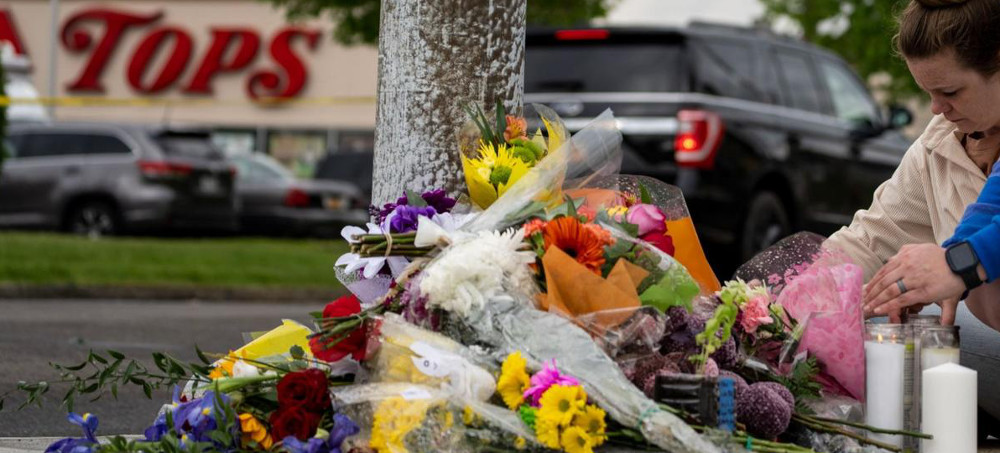 The DOJ has charged Federal hate crimes charges against alleged Buffalo shooter Payton Gendron. (photo: Getty)
The DOJ has charged Federal hate crimes charges against alleged Buffalo shooter Payton Gendron. (photo: Getty)
Payton Gendron, 18, already faces mandatory life term if convicted on state charges over deaths of 10 Black people in May attack
Payton Gendron already faced a mandatory life sentence without parole if convicted on state charges in the 14 May shooting which also wounded three survivors – one Black, two white.
The US attorney general, Merrick Garland, was in Buffalo on Wednesday to visit families of the 10 people killed. He was expected to address the federal charges during the visit.
Gendron’s radical, racist worldview and extensive preparation for the attack at the Tops Friendly Market are laid out in documents he apparently posted online.
The documents embrace a conspiracy theory about a plot to diminish white Americans’ power and “replace” them with people of color, through immigration and other means.
The posts detail months of reconnaissance, demographic research and shooting practice for a bloodbath meant to scare anyone not white and Christian into leaving the country.
Gendron drove more than 200 miles from his home in a nearly all-white town near the New York-Pennsylvania border to a predominantly Black part of Buffalo. There, authorities say, he killed shoppers and workers using an AR-15-style rifle, wearing body armor and livestreaming the carnage from a helmet-mounted camera.
The 18-year-old surrendered to police as he exited the supermarket.
He has pleaded not guilty to a state domestic terrorism charge, including hate-motivated domestic terrorism and murder.
According to the online documents attributed to Gendron, he scouted the supermarket in March, drawing maps and even counting the number of Black people he saw.
According to an affidavit filed with the federal criminal complaint, FBI agents executing a search warrant at Gendron’s home the day after the shooting found a note in which he apologized to his family and stated that he “had to commit this attack” because he cares “for the future of the white race”.
Gendron signed the note and addressed it to his family, the affidavit said.
Agents at the home in Conklin, New York, also found a receipt for a candy bar purchased from the Buffalo supermarket on 8 March, the day Gendron said in an online diary he went to scout out the store, as well as hand-drawn sketches of the store’s layout, the affidavit said.
Ten days after the attack, another 18-year-old with a semi-automatic rifle opened fire at an elementary school in Uvalde, Texas, killing 19 children and two teachers.
Soon after, the governor of New York, Kathy Hochul, signed 10 public safety bills including one prohibiting New Yorkers under age 21 from buying semi-automatic rifles and another that revised the state’s “red flag” law, which allows courts to temporarily take guns from people who might be a threat to themselves or others.
The US Senate followed on 12 June with a framework agreement on more modest federal gun curbs and stepped-up efforts to improve school safety and mental health programs.
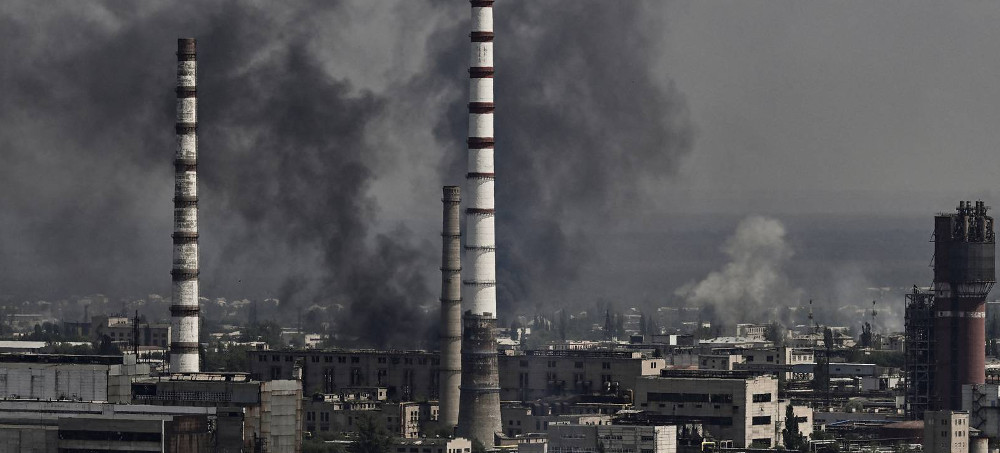 Smoke and dirt rise from the city of Severodonetsk during fighting between Ukrainian and Russian troops at the eastern Ukrainian region of Donba, June 14, 2022, amid Russian invasion of Ukraine. (photo: Aris Messinis/AFP)
Smoke and dirt rise from the city of Severodonetsk during fighting between Ukrainian and Russian troops at the eastern Ukrainian region of Donba, June 14, 2022, amid Russian invasion of Ukraine. (photo: Aris Messinis/AFP)
Speaking to the Russian state news agency TASS, the pro-Russian Luhansk People’s Republic’s interior minister, Vitaly Kiselev, alleged that Ukrainian forces were keeping civilians at the Azot plant “against their will.”
“They have been held there against their will for quite a while,” he said on Wednesday, according to an English translation of the news release. “There is no water, no food, no medicines.” According to the official, it is believed that the civilians are in the building’s bunkers and underground tunnels.
The city of Severodonetsk remains at the center of Russia’s current major assault in what has been coined the “battle for the Donbas” — a breakaway region that is supported by Russia.
The bombardment of the Azot plant echoes the siege at a similar chemical plant in Mariupol last month. Thousands of Ukrainian fighters and civilians took shelter in the plant until mid-May, when soldiers finally surrendered.
The region of Luhansk still remains held by the Ukrainian government, but Severodonetsk, a major city in the Luhansk region, now has 80% of its area in the hands of the Russian army.
However, Serhiy Haidai, the Ukrainian governor of Luhansk, said that about 500 civilians were sheltering in the Azot plant, along with 40 children.
In a statement released on June 6 on behalf of the Ukrainian businessman who owns the chemical plant, American lawyer Lanny Davis said that around 800 people were sheltered beneath the plant. That included about 200 of the 3,000 employees who had worked there. The workers had stayed behind to protect “as best as possible what is left of the plant's highly explosive chemicals.”
Meanwhile, Russia said it would set up a humanitarian corridor for the people trapped inside the plant. The operation was to run from 8 a.m. to 8 p.m. Moscow time on Wednesday.
The ultimatum was announced by the head of Russia’s National Defense Management Center. Mikhail Mizintsev told Ukrainian soldiers to “stop their senseless resistance and lay down arms.”
But according to reports, Ukrainian forces showed no sign of slowing down their defense in the eastern industrial city. “They’re defending Severodonetsk and not letting them advance to Lysychansk,” Haidai said, referring to a nearby city still under Ukrainian control. “Nevertheless, the Russians are close and the population is suffering, and homes are being destroyed.”
On Monday, Eduard Basurin, the deputy leader of the Donetsk People's Republic, or the People’s Militia, told reporters that the remaining Ukrainian soldiers were trapped in Severodonetsk after the last bridge entering the city was destroyed.
“Severodonetsk is actually blocked after they blew up the last bridge that connected it with Lysychansk yesterday,” Basurin said, according to the Associated Press. “Therefore, the Ukrainian military units that are stationed there remain there forever.” He added, “They have two options: Either follow the example of their colleagues and surrender, or die. They have no other option.”
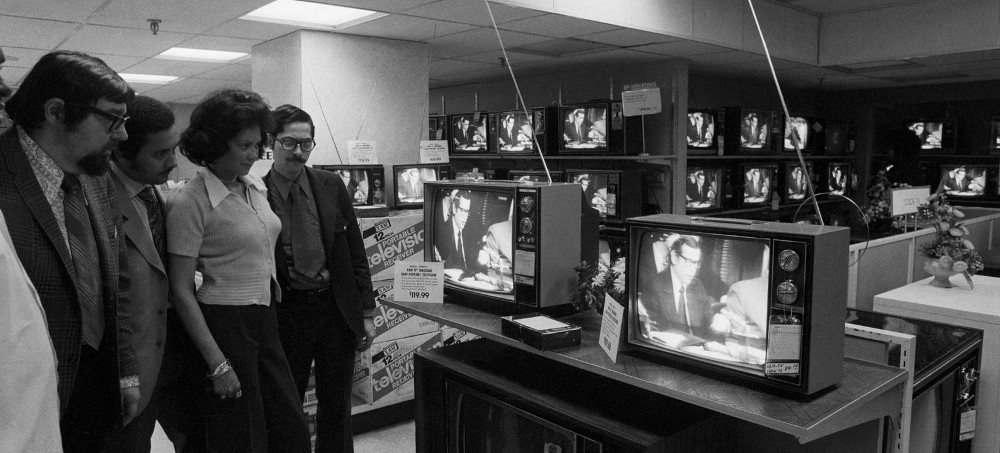 Customers and employees of a New York City department store watch the Watergate hearings on May 17, 1973. (photo: Getty)
Customers and employees of a New York City department store watch the Watergate hearings on May 17, 1973. (photo: Getty)
The 1973 Watergate hearings changed popular opinion after Richard Nixon’s landslide win. Here’s what is — and isn’t — different today.
When he finished, a senator asked 29-year-old Strachan if he had any advice for young people interested in public service. “Stay away,” he said. “It may not be the type of advice you could look back and want to give, but my advice would be to stay away.”
I was among the millions of Americans glued to the television that summer, a gangly teenager with dreams of working some day in politics. The Watergate hearings changed the nation’s perception of President Richard Nixon, laying the groundwork for his impeachment.
The hearings, and the role played by Washington Post reporters Bob Woodward and Carl Bernstein in exposing the Nixon administration’s corruption, inspired a generation of young people to become investigative journalists. I was one of them.
In a cosmic twist, this month’s House hearings on the Jan. 6 attack coincide with the 50th anniversary of the Watergate break-in. (For history buffs, the precise date the hapless team was caught trying to break into the Democratic Party’s headquarters was June 17.)
Many commentators have argued that given the current fractured political and media culture, Nixon would not have left office had the crimes of 1972 and 1973 taken place today; he could have been confident that 34 senators of his own party would stand by him, regardless of the evidence.
I’m not so sure. It’s certainly true that the major television networks broadcast gavel-to-gavel coverage on what amounted to nearly all channels available in that pre-cable period of our nation’s history. It would be decades before the creation of a network that would deliver an alternate reality in which an event like the Jan. 6 hearings could go mostly uncovered.
But the view that the America of 2022 is divided as never before ignores the staggering level of popular support Nixon enjoyed. His reelection in 1972 was one of the biggest landslides in American history, nothing like the knife-edge presidential races we’ve experienced over the past two decades. George McGovern, the Democratic candidate, ended up 18 million votes behind Nixon and carried only one state — implacably liberal Massachusetts — and the District of Columbia. The map on election night was a coast-to-coast sea of red.
As the facts about Watergate came to light after the election, minds changed. Strachan, the witness whose testimony made such an impression on me, testified that he was the courier who delivered cash from a White House safe to a Nixon campaign official. Strachan acknowledged that he “became more than a little suspicious” when the official put on gloves before accepting the package.
Nixon had his defenders in Congress, some of whom stayed with him to the bitter end. I still remember my anger in watching Rep. Charles Sandman, a New Jersey Republican, aggressively deny that Nixon had played any role in the crimes traced to every one of his closest aides.
The evidence ultimately prevailed. Sandman and the other Republicans on the House Judiciary Committee abandoned the president after the release of the “smoking gun” tapes in which Nixon directed the CIA to block an FBI investigation of Watergate on national security grounds. By then, Nixon’s approval rating had fallen to 24%.
The question that hangs over the Jan. 6 hearings is whether the emergence of similarly damning facts or documents would move either the Republican base or its leaders in Congress. The prevailing wisdom says no, and there are plenty of reasons to argue that a strikingly large portion of former President Donald Trump’s base will dismiss any disclosures by the media or members of Congress as “fake news.”
After initially condemning the attacks on the Capitol, a range of prominent Republicans took roughly that tack. Some likened the mobs to tourists on a rowdy visit. The Republican National Committee declared that the attacks were “legitimate political discourse.” Those assertions stood in stark contrast to the videos we assembled from the Parler app, which showed the violence of Jan. 6 from the perspective of those who filmed and posted it. Similar video evidence played an important role in the first night of the Jan. 6 hearings.
In its hearing Monday, the committee focused on a line of inquiry that our reporters explored this year: the willingness of “Stop the Steal” advocates to push theories they knew were disproven or dubious. That story took readers inside the small group that honed such arguments as the bogus ability of Dominion Voting Systems machines to “flip” votes from one candidate to another.
On Monday, the committee released testimony from Trump aides who said the president had embraced claims about stolen votes without any regard as to whether they were accurate or even plausible. William P. Barr, the former attorney general, said in taped remarks that he feared the president had become “detached from reality if he really believes this stuff.”
“When I went into this and would tell him how crazy some of these allegations were, there was never an indication of interest in what the actual facts were,” Barr said.
Over the years, the effects of congressional inquiries have been decidedly uneven. The investigation into illicit support of the anti-Communist rebels in Nicaragua by the administration of President Ronald Reagan turned the White House ringleader of the operation, Lt. Col. Oliver L. North, into a right-wing celebrity. I covered those hearings as a young reporter, and their main value, from my perspective, was the Republicans’ dissenting report that asserted presidents have every right to defy Congress on foreign policy issues. That document, written under the direction of then-Rep. Dick Cheney, turned out to be a valuable blueprint for how Cheney, as vice president, and the administration of President George W. Bush would deal with Congress in the post-9/11 era.
On the other hand, the 1954 Army-McCarthy hearings ended the demagogic power of Sen. Joe McCarthy, a Wisconsin Republican who used congressional investigations as a weapon against left-leaning government officials. In a fascinating link in the chain of history, those hearings focused on the conduct of Roy Cohn, McCarthy’s chief counsel and a lawyer who would come to school a young Trump in the scorched-earth approach to political and legal opponents. As president, Trump famously asked, “Where’s my Roy Cohn?” when he felt White House lawyers weren’t sufficiently aggressive in defending his interests.
All of this is to say one should be cautious in predicting the effect congressional investigations will have on public opinion. Learning that Trump’s advisers were divided between Team Crazy and Team Normal, and that Team Crazy clearly had the upper hand, might disturb a fair number of voters. I’ve seen congressional hearings change minds, including my own.
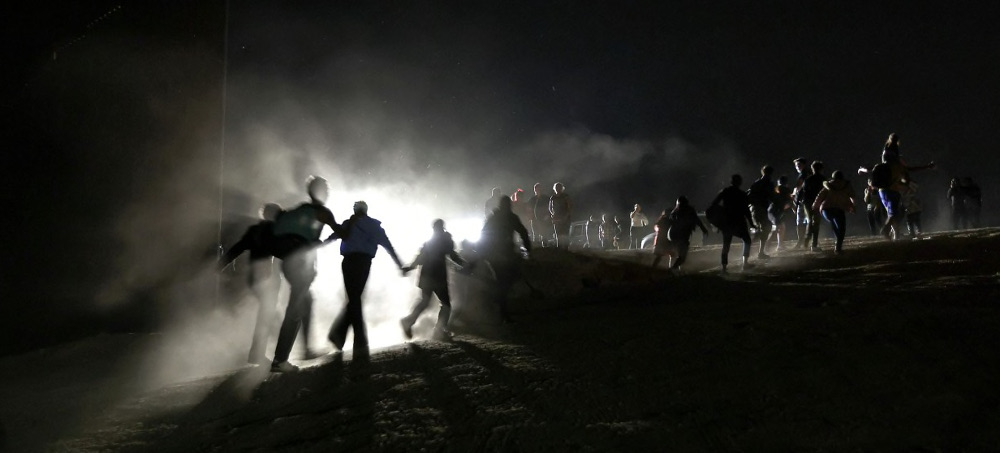 Immigrants cross through a gap in the U.S.-Mexico border barrier as others watch from above before being processed by the U.S. Border Patrol on May 23, 2022, in Yuma, Arizona. (photo: Mario Tama/Getty)
Immigrants cross through a gap in the U.S.-Mexico border barrier as others watch from above before being processed by the U.S. Border Patrol on May 23, 2022, in Yuma, Arizona. (photo: Mario Tama/Getty)
The rule aimed to expand the definition of "public charge," applied to people whose entry could be denied out of concern they would depend on the government for income.
Under former President Donald Trump, the Department of Homeland Security announced that it would expand the definition of “public charge,” applied to people whose entry could be denied because of a concern that they would primarily depend on the government for their income.
In the past, the designation was largely based on an assessment that an immigrant would be dependent upon cash benefits. But the Trump administration proposed to broaden the definition to include non-cash benefits, such as Medicaid, supplemental nutrition and federal housing assistance.
Anyone likely to require that level of help for more than 12 months in any three-year period could be swept into the expanded definition and denied admission.
Adoption of the rule in August 2019 touched off a series of lawsuits. Five separate federal courts blocked its immediate enforcement, so it never took effect. While those cases were pending, the Biden administration cancelled the rule and said the Justice Department would no longer defend it in court.
Arizona and a dozen other states stepped in, saying the federal government ended the program without following the proper administrative steps, such as seeking public comment. They sought to carry on defense of the public charge rule.
But on Wednesday, without explanation, the Supreme Court dismissed the case, which left the states with no legal ability to defend the Trump restriction.
Even if they had won the case, however, their prospects for getting the rule revived faced long odds. If the lower courts then ruled that the government didn’t follow the rules in shutting it down, the Biden administration could simply relaunch the effort to end the program and seek public comment.
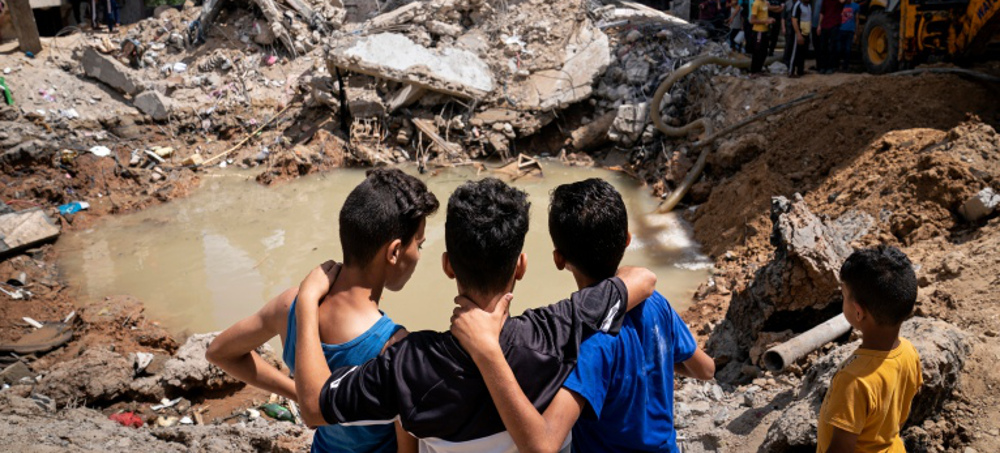 800,000 children in Gaza have only ever known life under blockade, affecting their mental health, says report. (photo: John Minchillo/AP)
800,000 children in Gaza have only ever known life under blockade, affecting their mental health, says report. (photo: John Minchillo/AP)
800,000 children in Gaza have only ever known life under blockade, affecting their mental health, says report.
The report, entitled “Trapped”, interviewed 488 children and 168 parents and caregivers in the Gaza Strip, following up on similar research that was conducted by the organisation in 2018.
The blockade of the Gaza Strip began in June 2007, severely affecting the territory’s economy, and heavily restricting travel. It has particularly affected children, who make up 47 percent of Gaza’s two million people.
About 800,000 Gazan children have never known life without the blockade, and have had to face what the report terms six life-threatening situations – five escalations in violence and the COVID-19 pandemic.
Save the Children’s latest research showed that the mental wellbeing of children, young people and caregivers has dramatically deteriorated since their last report four years ago, with the number of children reporting emotional distress increasing from 55 to 80 percent.
The report showed that there was a significant increase in the number of children who reported feeling fearful (84 percent compared with 50 percent in 2018), nervous (80 percent compared with 55 percent), sadness or depression (77 percent compared with 62 percent), and grief (78 percent compared with 55 percent).
Save the Children also reported that more than half of Gaza’s children thought about suicide, and three out of five self-harm.
Contributing factors to the mental health crisis experienced by children and young people in Gaza were found to be a lack of access to basic services such as health care, and the ongoing blockade.
According to the health caregivers interviewed in the report, 79 percent of Gaza children have suffered from bedwetting during the past few years, and 59 percent of them said that there had been an increase in children experiencing speech, language and communication difficulties, including temporary reactive mutism, which is a symptom of trauma or abuse.
Save the Children warned that the effect of these symptoms on children’s development, learning and social interaction is both immediate and long-term.
“The physical evidence of their distress – bedwetting, loss of ability to speak or to complete basic tasks – is shocking and should serve as a wakeup call to the international community,” Jason Lee, Country Director for Save the Children in the occupied Palestinian territories, said.
In the 2018 report, caregivers predicted that the continued blockade could destroy their ability to provide care for children. Save the Children’s latest report now shows that 96 percent of respondents reported constant sadness and anxiety, and emotional distress.
Save the Children called on the Israeli government to take immediate steps to lift the blockade of the Gaza Strip along with bringing an end to the ongoing occupation.
“We call on all sides to tackle the root causes of this conflict, and take steps to protect all children and families who deserve to live in safety and dignity. We need an immediate end to the conflict and economic deprivation that are huge stressors in children’s lives, as well as action to support the coping potential and resilience of children and their families in the Gaza Strip,” Save the Children said.
Israel imposed a land, air and sea blockade on the Gaza Strip following the Hamas’ takeover of Gaza in June 2007.
The blockade includes strict restrictions on travel movement for Palestinians living in Gaza. Crossings between Gaza and Israel are regularly closed, and there are many restrictions on the entry of fuel, electricity and other goods. Fishermen are limited to using a few nautical miles.
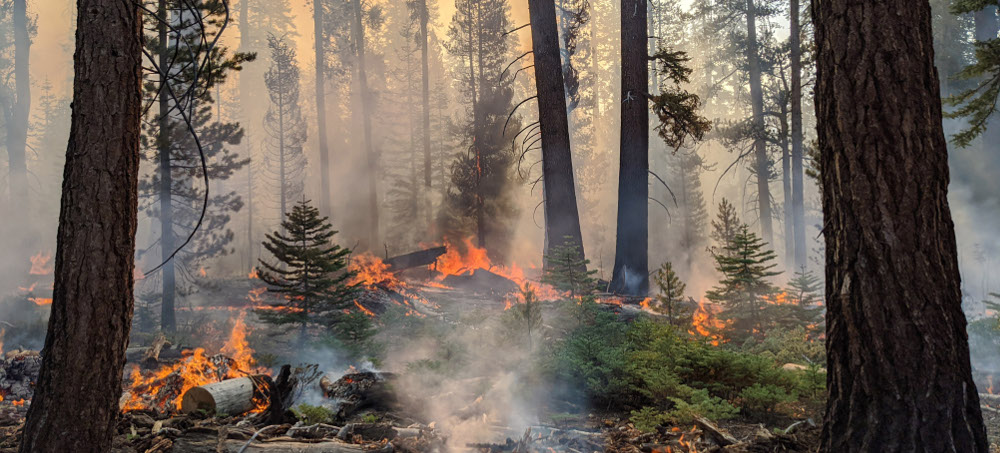 The worsening intensity of recent blazes has been too much for sequoias to handle. (photo: NPS)
The worsening intensity of recent blazes has been too much for sequoias to handle. (photo: NPS)
The worsening intensity of recent blazes has been too much for sequoias to handle.
So far, 2022 has been the driest year on record in California in at least 125 years.
— US StormWatch (@US_Stormwatch) June 10, 2022
This has severe implications for the state, including massive tree mortality, increased odds of another extreme fire season, and more stringent water restrictions. #CAwx #CAfire #CAwater pic.twitter.com/31xLK0Wtet
The trees, which grow in a narrow band of the Sierra Nevada, are accustomed to frequent wildfires — their tree rings show fire recurring every six to 30 years. But the worsening intensity of recent blazes have been too much for them to handle. Since 2020, three fires have resulted in the loss of 13 to 19 percent of the entire population, said Christy Brigham, chief of resources management and science at Sequoia and Kings Canyon national parks.
In August 2020, the Castle Fire killed up to 10,600 trees. And as many as 3,637 sequoias were killed or will ultimately die as a result of the September 2021 Windy and KNP Complex fires in the southern Sierra Nevada, according to the National Park Service.
While fires at lower intensity have beneficial effects for the giant trees by clearing out the flammable vegetation and helping to release seeds from their sturdy cones, Brigham said the main concern is the “large patches of high-severity fire.”
“The scale at which we are seeing high-severity fire right now — sequoias haven’t evolved with that,” said Linnea Hardlund, a giant sequoia forest fellow with Save the Redwoods League. “It continues to be surprising to a lot of people that giant sequoias are dying at this rate.”
Sequoias have thick bark that can withstand lower-intensity fire, and their high canopies are usually above the flames, Hardlund said. But recent fires are reaching and consuming the canopy.
“Mass fires”
The southern Sierra, hard hit during the 2012-2016 drought, has become an epicenter for tree mortality. Drought-weakened trees, particularly pine and cedar, were killed by insects during those years, and the effects of the past two years of extreme drought are also becoming apparent.
Given record-setting dryness in 2022, another significant die-off is possible this year.
“We are starting to see rapid mortality and elevated mortality again, especially in pines,” Brigham said.
Research has linked severe burning to swaths of overly dense forest — a legacy of decades of firefighting — and high tree mortality, both of which have helped to drive “mass fires” and firestorms.
Hardlund, who is also a graduate student at University of California at Berkeley, said changes in fuel, weather and climate conditions are leading to changes in observed fire behavior.
“When you don’t have any fire history in the last century, you have 100 years of fuel buildup,” she said. As a result, forests have an abundance of smaller trees, where fires can start before spreading to mature trees.
Hotter and longer fire seasons due to climate change are exacerbating already volatile forest conditions. As climate warms, forests are becoming more flammable and increasingly dense due to a lack of what experts call “good fire,” which can reduce fire fuels while maintaining forest health, such as the intentional burning used by Indigenous tribes for thousands of years.
Add a tremendous amount of dead and down material from the 21st-century megadrought and you have the ingredients for extreme fires that can burn for weeks and form pyrocumulus clouds, billowing vertical smoke clouds that indicate a fire is burning unusually hot as it consumes a forest. These intense blazes are capable of damaging or killing trees that have historically thrived with frequent fire.
The dice are loaded again this year
Now in a third year of drought, Sierra forests and giant sequoias face similar threats this summer.
Paltry snowpack melted out early this year, reaching zero percent in the southern Sierra on May 24 — just two days later than last year. The first five months of 2022 were the driest on record for California, according to data from NOAA. Parts of the central and southern Sierra are now in exceptional drought, the most severe category. The 2021-22 water year has been the third-driest on record in the southern Sierra, behind 2020-21 and 1976-77.
The dice are loaded for a well-above-normal wildfire season in the West, including in California, said Ronnie Abolafia-Rosenzweig, a postdoctoral researcher at the National Center for Atmospheric Research in Boulder, Colo.
In a recent study, Abolafia-Rosenzweig and his co-authors found that winter and spring climate is strongly related to summer wildfire activity and to increases in burned area over the past four decades in the western United States. Previous research has linked those increases to human-caused climate change.
“We found that spring snowpack modulates how dry and hot summers are, where early snow disappearance favors hotter and drier summers,” he said.
Summer heat, in turn, is supercharging wildfires. This year, the Sierra are “likely to have dry conditions in late summer that enable large and fast-growing wildfires,” Abolafia-Rosenzweig said.
That could signal a risky season for the gigantic trees.
The Save the Redwoods League has called for emergency measures to protect sequoia groves from further destruction, in addition to long-term policy changes. The group is pushing to treat 2,000 acres of the most-at-risk groves before the 2023 fire season to remove unnatural vegetation buildup, including with carefully planned prescribed burning.
“Both the land cover and the climate are factors — and we have control over both,” Abolafia-Rosenzweig said. “We’re able to consider how both relate to growing fire risks and manage both accordingly.”
Special Coverage: Ukraine, A Historic Resistance
READ MORE
Follow us on facebook and twitter!
PO Box 2043 / Citrus Heights, CA 95611



No comments:
Post a Comment
Note: Only a member of this blog may post a comment.